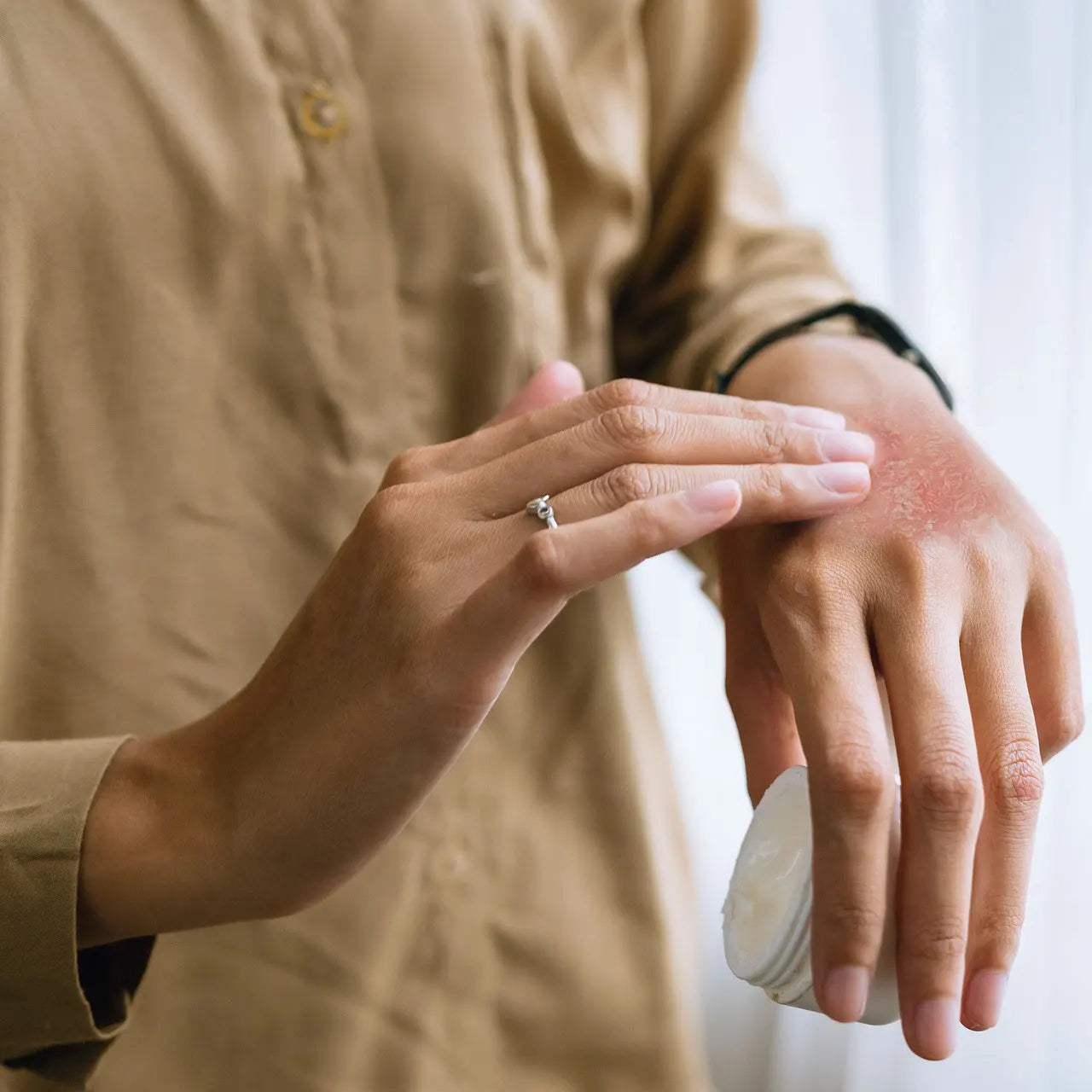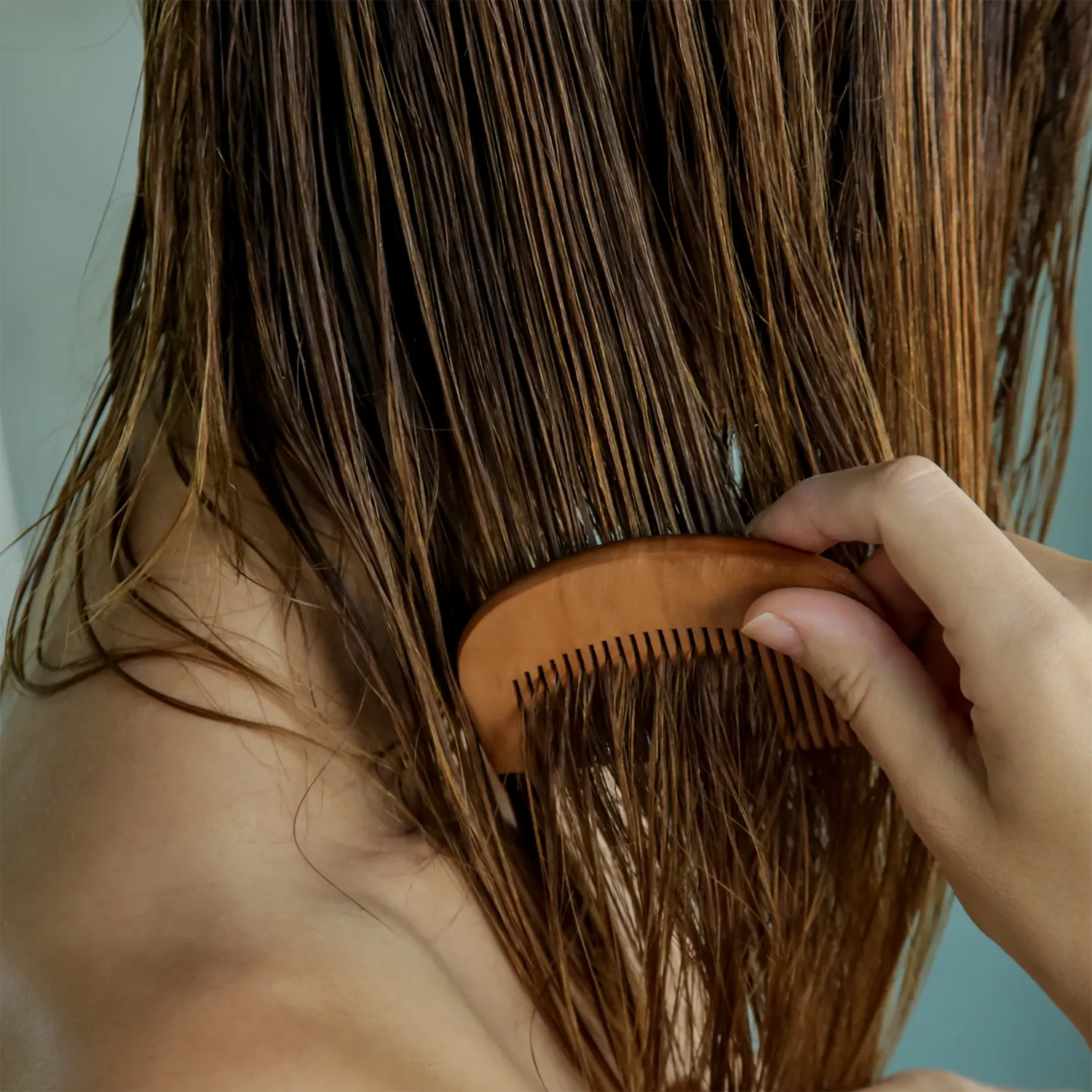Article: Understanding atopic dermatitis

Understanding atopic dermatitis
Emulsifier-free organic care for atopic dermatitis skin: Soothes, strengthens the skin barrier, and provides intensive moisture – completely without irritating additives such as alcohol, fragrances, or preservatives. Ideal for itching, eczema, and sensitive skin.
Understanding atopic dermatitis
Atopic dermatitis, also known as atopic eczema or atopic dermatitis, is a non-contagious, chronic skin disease that occurs in flare-ups and is characterized by severely inflamed, extremely dry, and sensitive skin. The skin barrier is severely compromised in atopic dermatitis, leading to significant moisture loss and increased susceptibility to microorganisms such as bacteria, viruses, and fungi. The main symptom is intense itching, which often leads to excessive scratching in those affected, further irritating the skin.
Symptoms and skin changes in atopic dermatitis
During a flare-up, itchy and weeping eczema occurs, which may develop into blisters. Typical skin areas include the insides of the elbows, backs of the knees, hands, face, and neck. The itching can be particularly severe at night and cause sleep disturbances, which impairs quality of life. Atopic dermatitis may first appear in childhood and often improve during puberty. In adults, however, flare-ups can become more severe due to hormonal changes, stress, or external influences.
Atopic dermatitis in children
Children are particularly affected by atopic dermatitis. In infants, atopic eczema usually appears on the cheeks, forehead, and scalp, and later in the crooks of the arms and knees. Children often react sensitively to external stimuli and scratch excessively, which worsens the eczema. Cradle cap on the scalp, which can be confused with cradle cap, is a common symptom.
Atopic dermatitis in adulthood
Many adults experience relapses of atopic dermatitis, especially during hormonal changes such as pregnancy or menopause. For older adults, the sudden recurrence of symptoms can be particularly distressing.
Causes and risk factors
Atopic dermatitis is considered to be genetically influenced. The disease occurs more frequently in children if one or both parents are also affected. In addition to genetic factors, however, external influences and the immune system also play a role. Allergens, food intolerances, environmental influences, and psychological stress can trigger or exacerbate atopic dermatitis flare-ups.
The role of the skin barrier
The skin barrier protects the body from moisture loss, pathogens, and UV radiation. In atopic dermatitis, this protective layer is disrupted, allowing moisture to escape and harmful microorganisms to penetrate more easily. A weakened skin barrier also makes the skin more susceptible to inflammation and infection, as the natural skin flora is also disrupted.
Skin care for atopic dermatitis
Proper skin care is an essential component for relieving atopic dermatitis symptoms. Skin care should focus on building and protecting the skin barrier.
- Emulsifier-free creams: Emulsifier-free products with a derma membrane structure (DMS) stabilize the skin barrier by delivering skin-like lipids and preventing moisture loss. Myrto Bio face creams are based on this technology to strengthen the skin's protective barrier.
- Avoid irritants : Atopic skin is sensitive to additives such as fragrances, alcohol, preservatives, and essential oils. Products without these additives are more suitable for sensitive skin.
- Avoid peels : Peels weaken the skin barrier and promote inflammation. They should be avoided on skin with atopic dermatitis to avoid exacerbating itching and dryness.
- Gentle cleansing : Choose a mild, surfactant-free cleanser with anti-inflammatory oat beta-glucan. Alternatively, rich cleansing oils are suitable for dry and sensitive skin.
- Take lukewarm, short showers : Avoid hot water and long showers. Mild organic shampoos and moisturizing shower gels without harsh surfactants are ideal.
Active ingredients for neurodermatitis skin
- Beta-glucan : This extract from the oat germ layer strengthens the skin barrier. It moisturizes and relieves inflammation and itching.
- Phosphatidylcholine : This skin-like active ingredient from sunflowers improves and repairs the barrier function and helps to retain moisture.
- Linoleic and gamma-linolenic acids : These polyunsaturated fatty acids from grape seed or evening primrose oil provide intensive care for the skin.
- Squalene and Vitamin E : These antioxidant substances promote cell protection and moisture retention.
Medical treatment options for atopic dermatitis
For more severe cases, medical treatments are available that can suppress inflammation and alleviate symptoms in the short term.
- Cortisone preparations : Cortisone creams are often prescribed for acute attacks, but prolonged use of cortisone can cause numerous side effects. These include weight gain, diabetes, eye problems, and high blood pressure, as well as osteoporosis, thinning skin, acne, hormonal imbalances, and a weakened immune system. Cortisone can only temporarily suppress symptoms but does not contribute to a cure.
- Calcineurin inhibitors : These medications also suppress inflammatory reactions in the skin. Calcineurin inhibitors are considered very effective, but they are associated with serious side effects, especially with long-term use. The wide spectrum of side effects ranges from kidney, liver, gastrointestinal, and neurological damage to an increased risk of more severe infections and an increased risk of skin cancer and lymphatic cancers due to immune system suppression.
- Biologics : The monoclonal antibody dupilumab targets the immune system and may potentially help with severe atopic dermatitis. However, conjunctivitis occurs as an unwanted side effect in 10-25% of all cases. Other more common side effects include headaches, allergic reactions, or herpes skin infections.
- Phototherapy : UV light treatments reduce inflammation, especially when combined with the drug psoralen (PUVA therapy). Common side effects of PUVA therapy include itching, dry skin, redness, and sunburn-like reactions. With long-term use, phototherapy leads to premature skin aging. Potential long-term side effects also include eye problems (cataracts) and an increased risk of skin cancer.
Neurodermatitis and the psyche
Atopic dermatitis can be exacerbated by stress and psychological strain, as the skin and psyche are closely linked. Those affected often suffer from social isolation and anxiety, which can further influence the course of the disease.
Nutrition for atopic dermatitis
A balanced, alkaline diet with fresh fruits and vegetables supports the immune system and skin health. Dairy products and sugar should be reduced, as they have an acid-forming effect in the body and can lead to intolerances.



